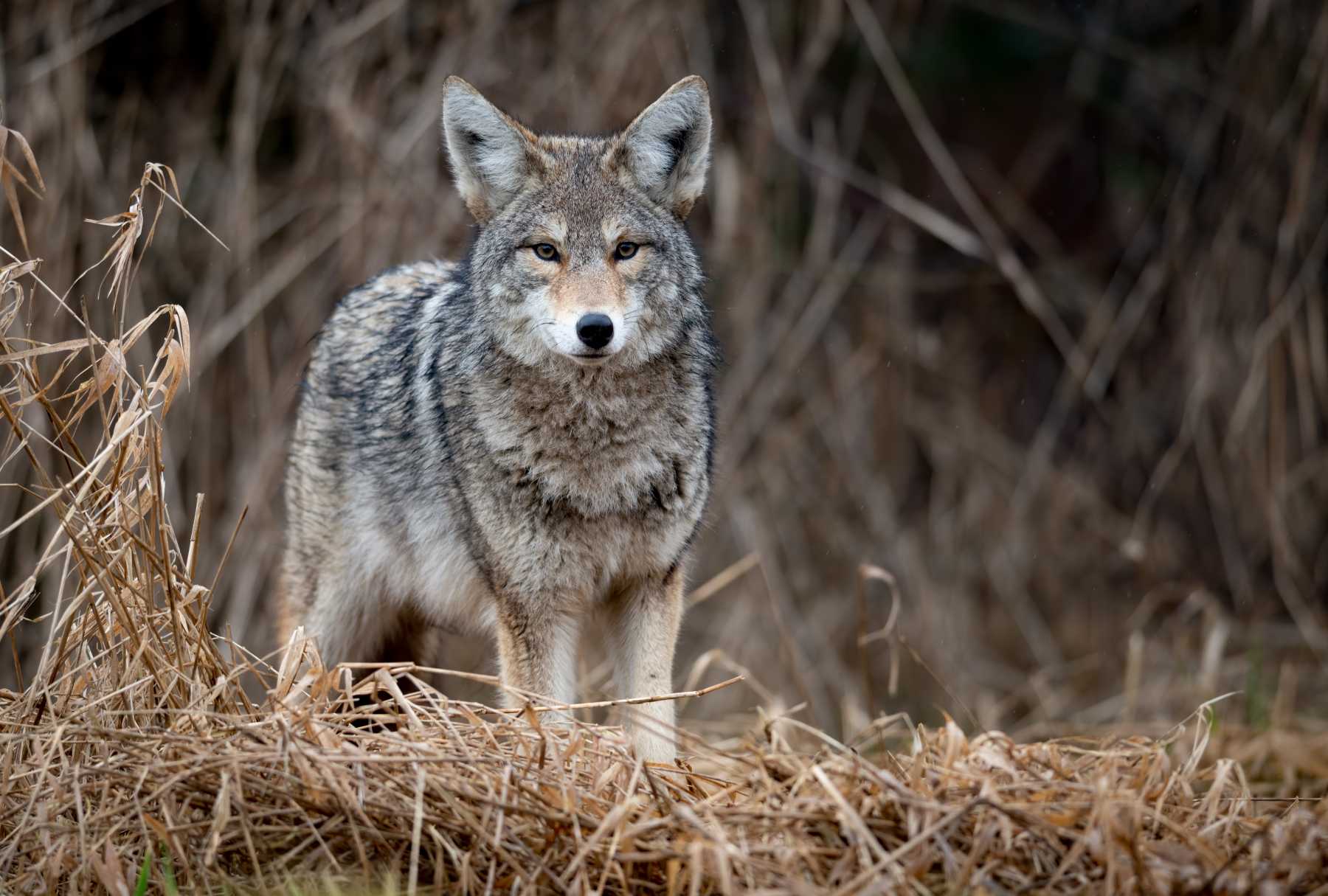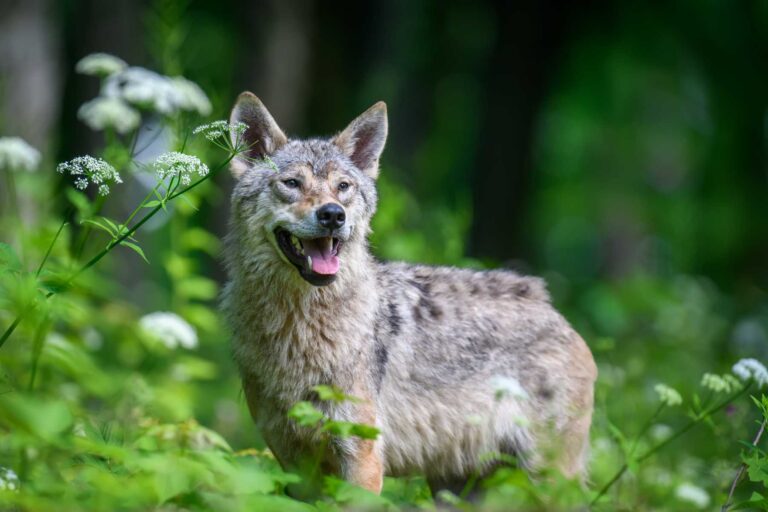What Eats Coyotes? 10 Coyote Predators
What Eats Coyotes?
The wily coyote, an emblem of adaptability and resilience, roams the North American wilderness encountering numerous challengers in its search for survival. While often portrayed as a cunning, cloaked figure that broods within untamed landscapes, the coyote is not invincible. In reality, it faces a variety of natural predators that play crucial roles in maintaining the balance of ecosystems.
For those curious about the web of life, the predators of this canid offer insight into the grand scope of nature. In this listicle, we unravel the mystery behind what eats coyotes, sharing ten of the coyote’s most formidable predators. Whether you are a wildlife enthusiast, an outdoors adventurer, or a farmer attentive to the nuances of the natural world, understanding these interactions provides invaluable knowledge and a deeper appreciation for the wildlife around us.
1. Gray Wolf (Canis lupus)
The Apex Canid
An iconic counterpart to the coyote, the gray wolf, inhabits similar territories across North America. With a pack mentality and impressive hunting prowess, gray wolves can take down coyotes, especially when turf wars arise over territories and resources.
Habitat: Historically, gray wolves occupied a wider range, but habitat loss and human intervention have affected their numbers. Today, they can be found in remote wilderness areas.
Interactions with Coyotes: Wolves often see coyotes as competition and will aggressively defend their territory. While they may not actively prey on coyotes, they will do so if necessary.
2. American Black Bear (Ursus americanus)
A Formidable Omnivore
The American black bear is a hefty predator of the coyote, well-adapted to forest habitats, where it can surprise and overpower solitary coyotes.
Habitat: Forests, woodlands, and sometimes the fringes of human settlements.
Interactions with Coyotes: Black bears are opportunistic hunters and will consume coyotes when they encounter them.
3. Mountain Lion (Puma concolor)
Silent Stalker of the West
Also known as puma or cougar, the mountain lion reigns as one of the top predators of the Americas. A stealthy cat that thrives in mountainous and woodland habitats where it prefers to hunt solitary animals, including the coyote.
Habitat: Mountain ranges, deserts, and coastal forests.
Interactions with Coyotes: Mountain lions will hunt and consume coyotes, using their agility and superior strength to their advantage.
4. Bobcat (Lynx rufus)
The Stealthy Stroller
The bobcat, about twice the size of a house cat, is another silent hunter that preys on coyotes. With a preference for woodland areas and a mysterious nature, bobcats can overpower young or smaller coyotes in a surprise attack.
Habitat: Forested areas, grasslands, even urban fringes.
Interactions with Coyotes: Bobcats keep coyote populations in check by preying on them, especially in competition for prey or dominance.
5. Golden Eagle (Aquila chrysaetos)
The Majesty of the Skies
Golden eagles, with their keen eyesight and powerful talons, can snatch up young or weak coyotes. They patrol the open landscapes and often clash with coyotes for dominance.
Habitat: Open country, mountainsides, and tundra.
Interactions with Coyotes: Golden eagles play a role in scavenging on coyote carrion, but they are also known to take down live coyotes when the opportunity presents itself.
6. Red Fox (Vulpes vulpes)
Agile and Adaptive
While smaller than the coyote, red foxes possess extraordinary agility and cunning, making them effective coyote predators, particularly in skirmishes over territory or food.
Habitat: Varied, from rural and urban areas to forests and deserts.
Interactions with Coyotes: Red foxes will often become rivals of coyotes, competing for similar niches and sometimes preying on coyote pups.
7. Fishers (Pekania pennanti)
A Marvel of the Forest
Fishers are elusive predators with retractable claws and a remarkable tree-climbing ability. They can take down a coyote with a surprise attack or by outmaneuvering it in dense woodland settings.
Habitat: Northern forested areas, a preference for coniferous forests.
Interactions with Coyotes: Fishers are known to hunt and kill coyotes, playing their part in the natural check on coyote populations.
8. Great Horned Owl (Bubo virginianus)
The Silent Judge of the Night
Great horned owls are the silent assassins of the nocturnal world, targeting small or young coyotes with swift and deadly strikes during the cover of darkness.
Habitat: Wide-ranging, from deserts to forests, plains, and urban areas.
Interactions with Coyotes: Great horned owls are significant predators of young coyotes, contributing to the natural control of coyote numbers.
9. Humans (Homo sapiens)
The Ultimate Adversary
While not within the typical food chain, humans, mainly through hunting, have long been one of the primary predators of coyotes. They have created conservation programs aiming to curb coyote populations to reduce livestock predation and manage ecosystems.
Habitat: The entire globe.
Interactions with Coyotes: Humans are the most significant threat to coyote populations, primarily due to habitat destruction, hunting, and land development.
10. Domestic Dogs (Canis lupus familiaris)
A Surprising Foe
Domestic dogs, while not naturally part of the coyote’s wild ecosystem, can cause significant harm to them, especially in altercations when domestic dogs are off-leash.
Habitat: Wherever human settlements exist.
Interactions with Coyotes: Domestic dogs can contribute to the mortality of coyotes in exchanges and fights, especially when urban and wild spaces intersect.
Understanding these interactions helps us comprehend the delicate dance of predator and prey in the wild. More than simply knowing ‘what eats coyotes,’ this listicle is a testament to the intricate and vital relationships among different species. By recognizing the roles each animal plays, we can foster respect for the natural order and, in doing so, protect the environments we share.
The Bigger Picture
The existence of coyote predators is a critical factor in sustaining ecological balance. Each species, including the coyote, holds a unique place within its habitat, and the presence of predators helps manage populations and maintain a harmonious ecosystem. Through conservation efforts and responsible land management, we can support a sustainable approach to coexistence, ensuring the survival of all species for generations to come.
Take Action for Coexistence
If you’re inspired to take action, consider supporting local conservation groups, educating others about the importance of predator-prey dynamics, and practicing responsible outdoor behavior. Each positive step contributes to a world where humans, coyotes, and all wildlife can thrive together.


